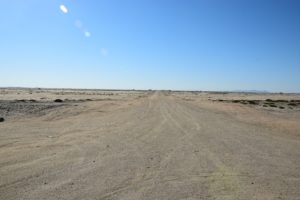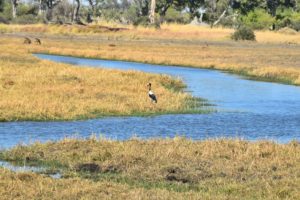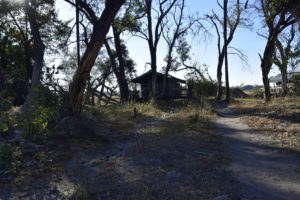First glimpse of Wildlife
Night at the camp
We had a relaxed three-course dinner served on the semi open deck of the camp. A family of three – parents and their teenage daughter, was sitting at the table next. We found out that they lived in Brazil now but the gentleman originally hailed from Russia and the lady from Ukraine. They were travelling to almost the same places that we were but in the opposite direction. We took tips from them about Etosha, our next stop, and gave them some about Sossussvlei. They also told us Rio de Janeiro is a ‘must visit’, so I added that to my bucket list.
As we walked back to our room after dinner, the huts stood silhouetted against the outcrop of rocks; Camp Kipwe looked surreal under the night sky.
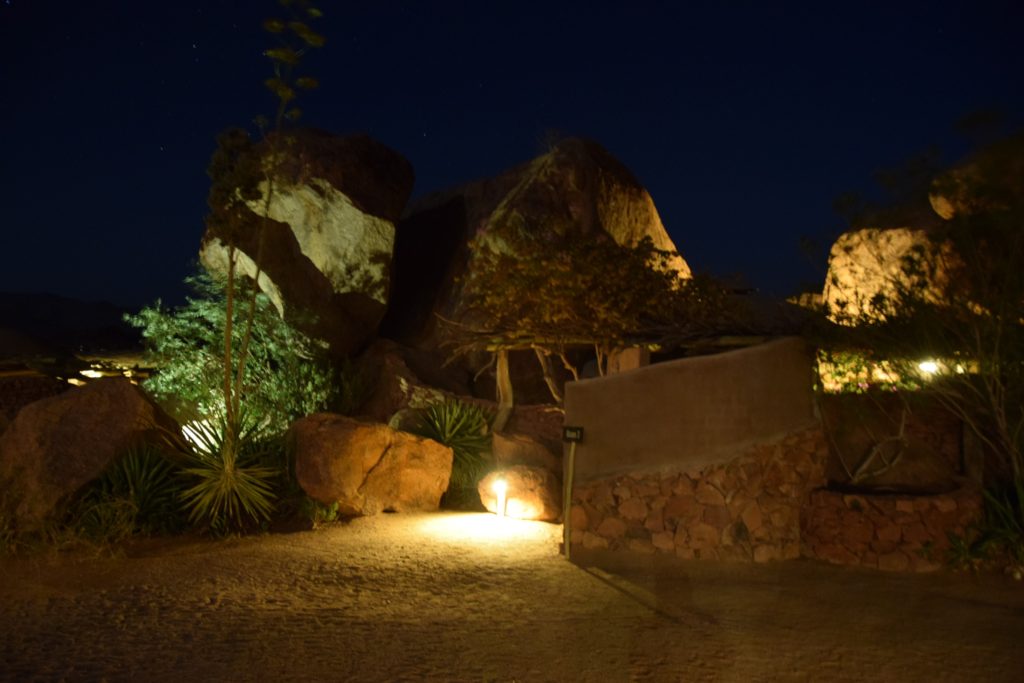
Sustenance in the morning
After breakfast the next morning, we bid goodbye to Camp Kipwe and our new found Brazilian friends as we started to drive again. We headed to our first stop of the day, which was the nearest petrol station. We followed the signs to Mowani Mountain Camp from the main road and then took a right turn at a T-junction where the road to the left led to the camp. As we arrived at the junction, we managed to recognize the haloed landmark by the lone propeller that stood on a relatively flat strip of land which looked like the runway. It also had a wire mesh fencing to separate it from the road.
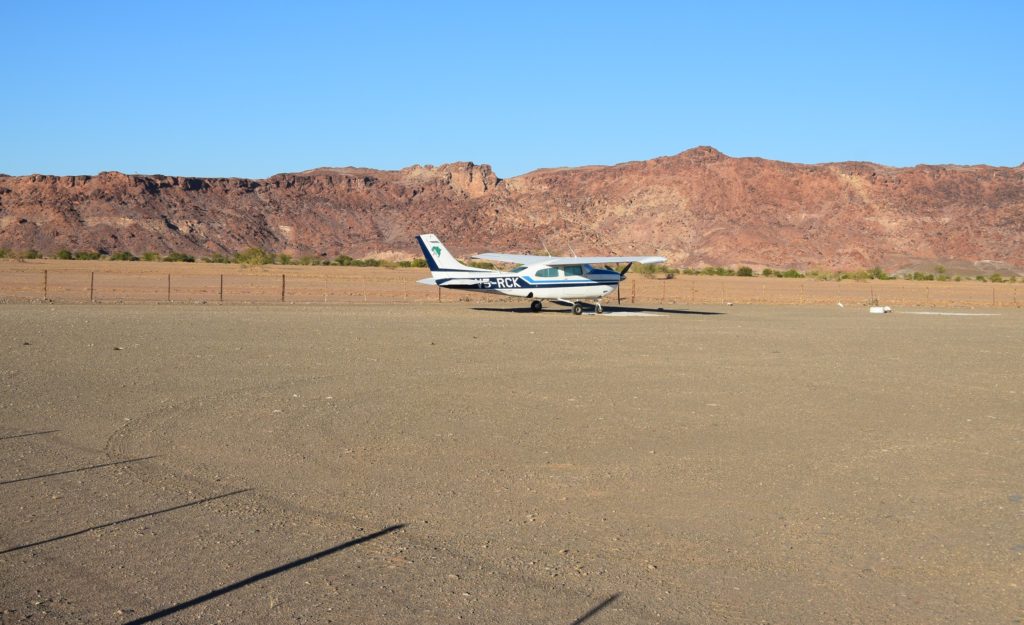
On turning right, we spied our petrol station, it stood about a hundred metres from the turn. There was one single pump under a ramshackle shed standing a bit off from a cluster of buildings which seemed to be some kind of workshops. We filled up petrol, heaved a sigh of relief and started on wards for our next destination.
Rock Engravings
We drove back to the main road D2612 and then turned in to a smaller road passing by the Damara Living Museum towards Twyfelfontein, Namibia’s first UNESCO World Heritage Site. We parked, purchased tickets and then had to wait for a guide to accompany us. One is not allowed to wander around the site on one’s own.
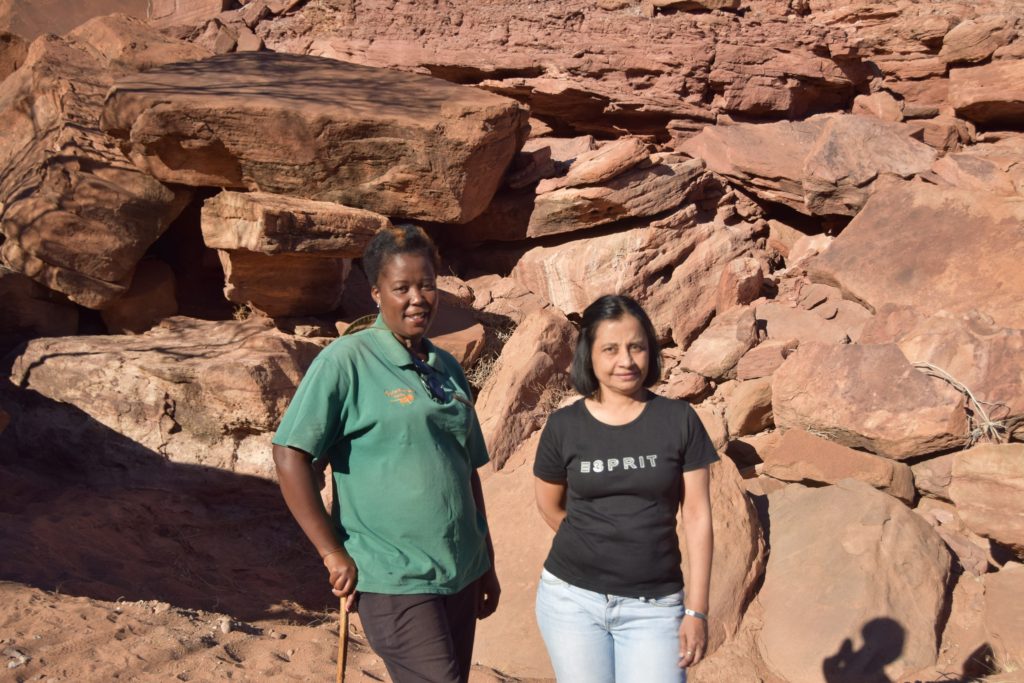
Our guide hailed from a near by village. She explained that all the guides who worked here were trained on the history and conservation aspects of the site before they were employed. She also told us that the area had been inhabited for more than 6000 years and different tribes, who lived here at different periods of time, left their mark through different rock engravings. These are also known as petroglyphs. (I was struck by the similarity of the engravings with the petroglyphs we had seen in Northern Territories in Australia.)
The rocks here were reddish brown and the top layer of the rocks are chiseled away to carve out these figures. So the engravings stood out quite boldly in their lighter colour.
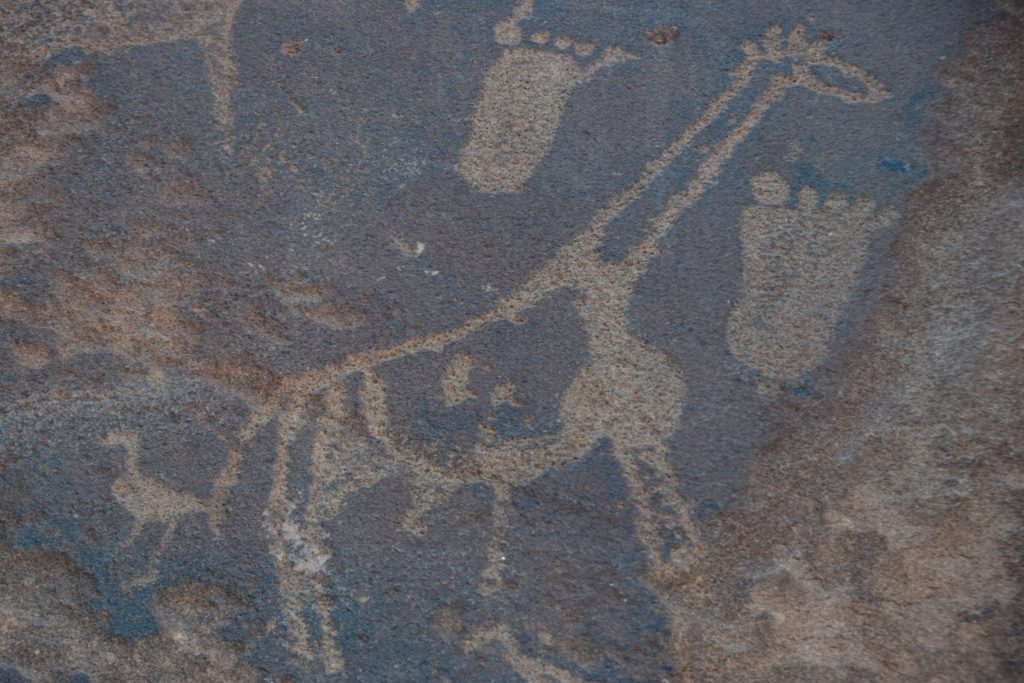
Footprints on stone 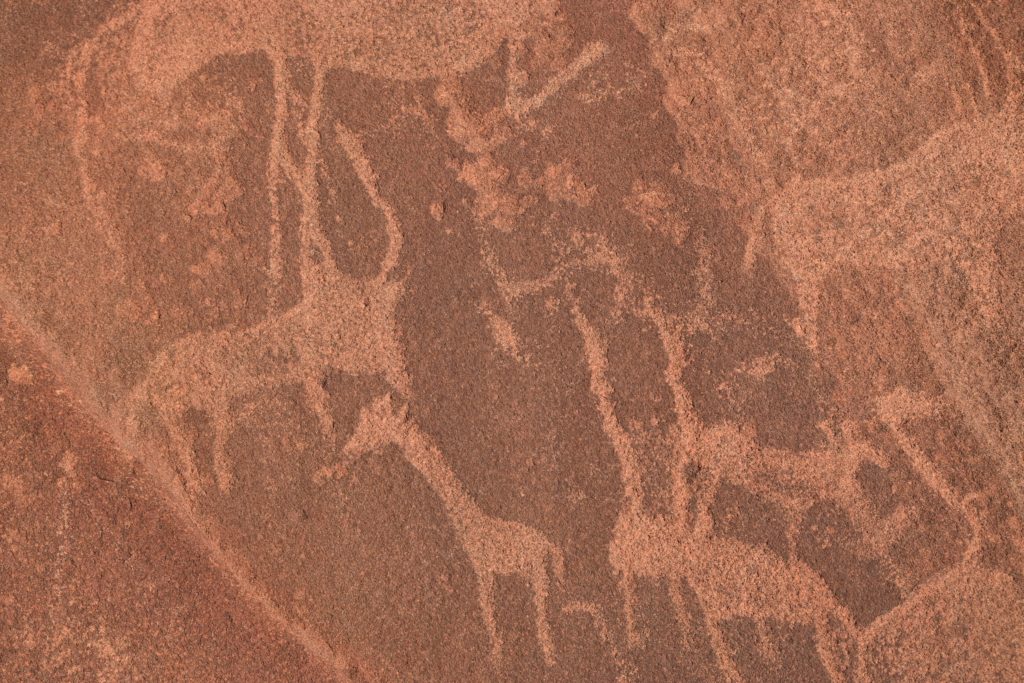
History on the rocks
We also heard the story of David Levin who had set-up a farm here but could not sustain because of lack of water. As we walked about, our guide pointed out his derelict home which still stood on the site.
As we started on our three hundred and fifty odd kilometres drive to Etosha, we made a short stop at the Damara Living Museum, situated about 10 kilometres from Twyfelfontein. This museum showcases Damara culture and we experienced a quick peek in to life in a traditional village.
Onward to Etosha
Right after we got back on to the main road an elephant family – two adults and one baby, crossed our path. We were thrilled – they must be the mountain elephants that people talked about in the camp, we thought.
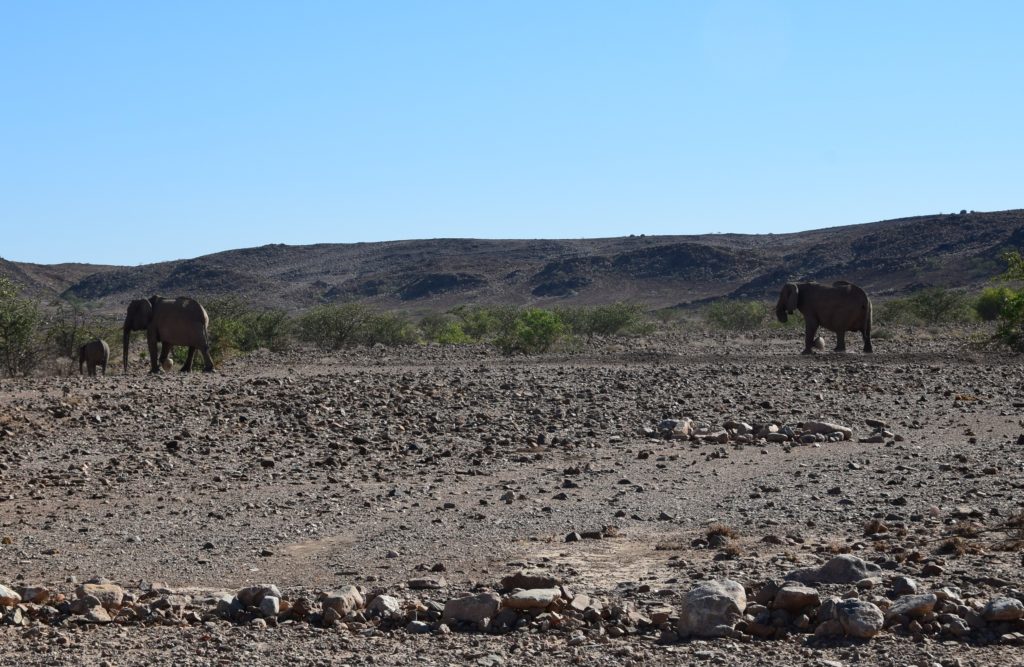
We saw the gravel road changing to metaled as we approached the town of Khorixas; the road was named C39 now. Our phone connection got stronger as we got nearer to the town. This had been a recurring feature in all drives so far; there was almost no data connectivity in vast stretches of road where human habitation is also sparse.
The next 250 kilometres was a real smooth drive. We bypassed the town of Outjo and reached the Anderson’s Gate of the Etosha National Park around 2 pm in the afternoon.
Arriving at Etosha
The entrance fees to the park was N$80 per person per day and another N$10 for our vehicle. We registered ourselves at the gate and were given a receipt which we had to keep till we left the park. Vast barrenness greeted us as we entered the park. There were also two giraffes feeding on thorny scrubs to our left – we had arrived at our dream land.
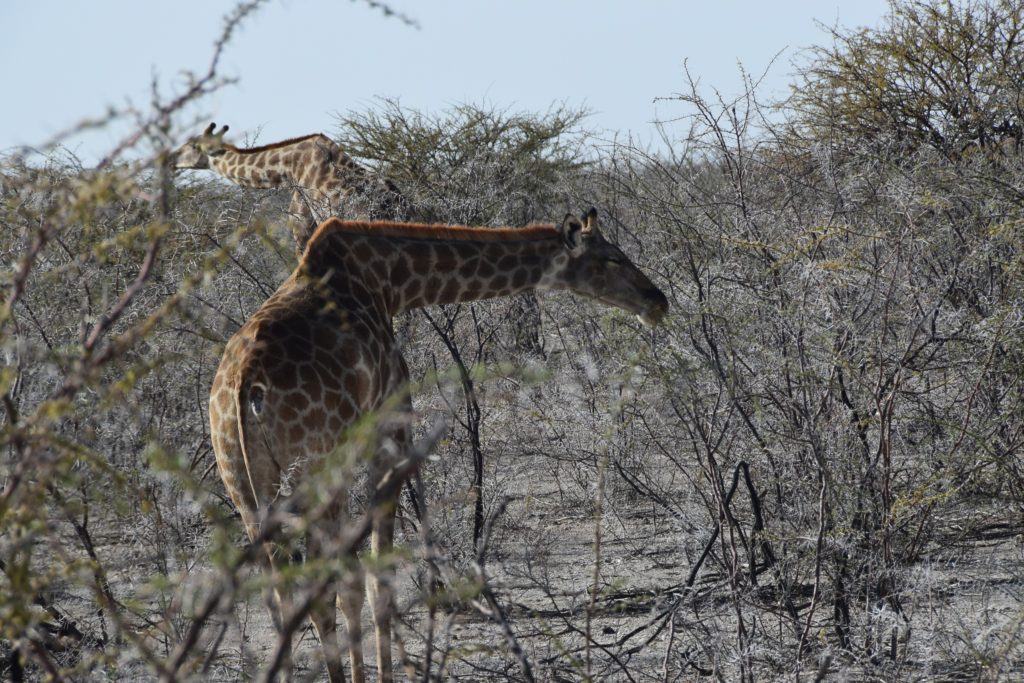
The welcoming pair 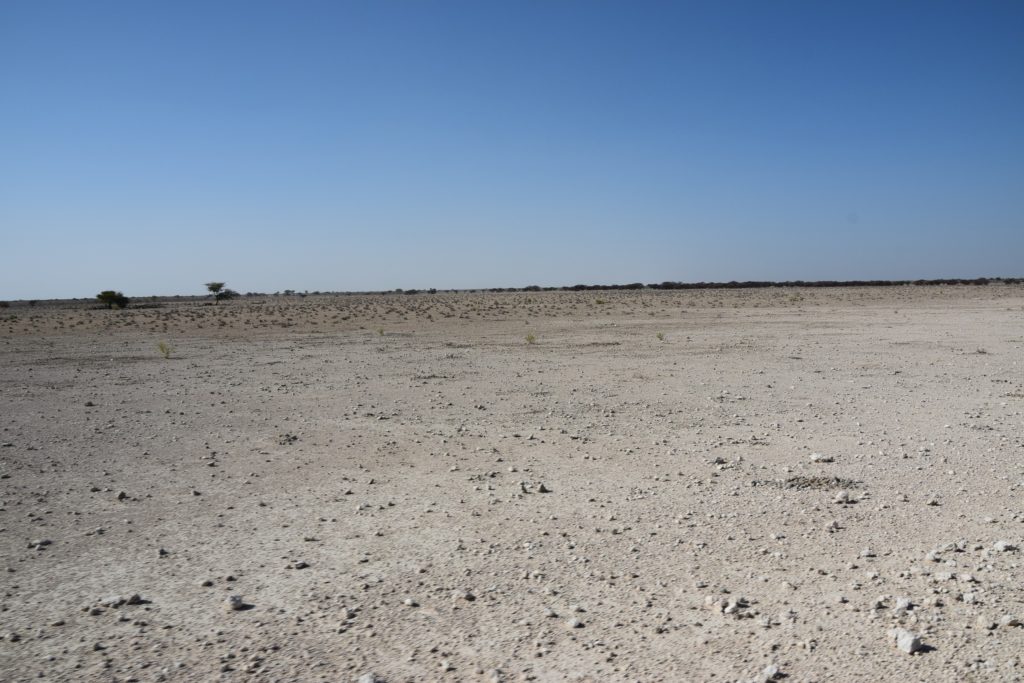
Vastness of Etosha

